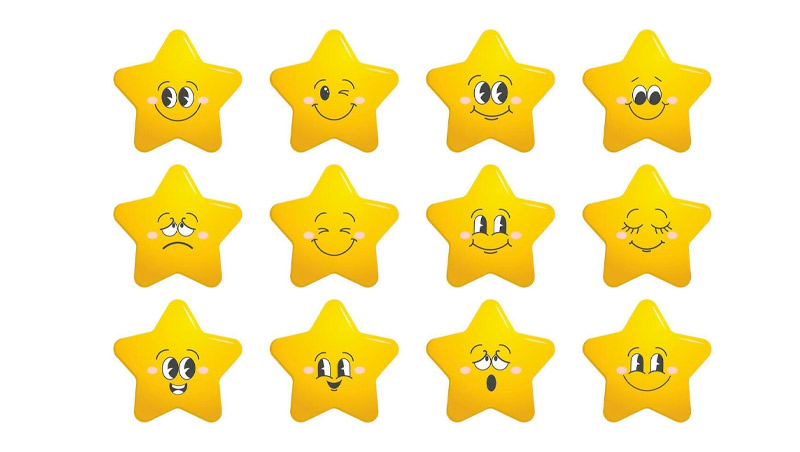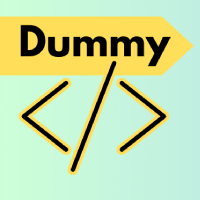The Star Emoji: A Comprehensive Analysis Of Meaning, Usage, And Evolution

| Category | Business |
| Published | 15 April 2025 |
| Tags | |
| Share |
The ⭐ Star emoji (officially called "White Medium Star" in Unicode) is a classic five-point star, typically displayed in golden or yellow across most platforms. It's a simple yet powerful symbol used in digital communication to represent excellence, achievement, recognition, or quality. Think of it as a "gold star for effort" or "5-star review." The ⭐ Star emoji is a go-to symbol for praise, positivity, and standout moments in texts, social posts, reviews, and more. It’s small, but it shines bright.
I. Introduction: The Ubiquitous Star
The classic five-point gold star emoji (⭐), often called the "Star" emoji, is one of digital communication's most recognizable and frequently used symbols. Its simple, archetypal design lends itself to a wide array of metaphorical and literal applications.
This report provides a comprehensive analysis of the ⭐ emoji, examining its primary and secondary symbolic meanings, comparing its usage and connotations with other star-related emojis, exploring its visual variations across different digital platforms, and detailing its formal history within the Unicode Standard and subsequent Emoji specifications.
Understanding the nuances of this seemingly straightforward symbol reveals much about the dynamics of visual language and meaning-making in the digital era.
II. Primary Symbolic Meanings: Excellence, Success, and Acclaim
The ⭐ emoji's most prominent function is as a symbol of achievement, quality, and positive evaluation. It frequently represents fame, success, excellence, and talent. This aligns with the long-standing cultural association of stars with distinction and prominence, often seen in phrases like "star performer" or "star student."
In digital contexts, this translates directly into its use for indicating high ratings, particularly in reviews for products, services, or experiences. A five-star rating system, visually represented by multiple ⭐ emojis, is a near-universal shorthand for quality assessment. Similarly, the emoji serves as a digital equivalent of a "gold star," used to convey appreciation, praise for a job well done, or recognition of someone's positive attributes or talents.
Whether complimenting someone's performance or acknowledging their skills, the ⭐ emoji is a concise marker of approval and positivity. Its deployment signifies top-tier status or stellar work or expresses admiration and appreciation.
III. Secondary and Literal Uses: Emphasis, Flair, and Astronomy
Beyond its core symbolism of achievement and quality, the ⭐ emoji serves several secondary functions in digital messaging. It is commonly employed to add emphasis or a touch of visual flair to text. Placed strategically within or at the end of a message, it can draw attention to a particular point or enhance the overall aesthetic, making the communication feel more vibrant or celebratory.
Furthermore, the ⭐ emoji can express gratitude or thanks, often used to highlight appreciation for a favor or kind gesture. In this context, it functions similarly to its use in signifying excellence, marking the person or action as "stellar."
While predominantly metaphorical, the ⭐ emoji is occasionally used to represent actual astronomical stars. Users might employ it when discussing the night sky, stargazing, or astronomy in general, although other, more specific celestial emojis often fulfill this role more explicitly.
This polysemy, or the capacity for multiple meanings, underscores the importance of context in interpreting the intended significance of the ⭐ emoji in any given communication.
IV. Comparative Analysis: Distinguishing ⭐ from its Celestial Cousins
The digital universe contains several star-related emojis, each with distinct connotations, though their applications sometimes overlap with the classic ⭐. Understanding these nuances is crucial for precise communication.
? Glowing Star: Nearly identical in basic form to ⭐, the ? emoji adds radiating lines or sparkles, specifically symbolizing brightness, shininess, luminescence, or a sense of "glowing." While ⭐ denotes general achievement or star quality, ? emphasizes brilliance or radiance, often used to describe something visually dazzling or someone exuding positive energy. It holds the second-highest usage frequency among star-related emojis in specific contexts, following ⭐.
✨ Sparkles: Representing a cluster of three (usually four-pointed) stars, the ✨ emoji is highly versatile. It commonly signifies beauty, positivity, excitement, admiration, love, congratulations, magic, and cleanliness. It can also stand for literal stars or glitter. A particularly prevalent use, especially on platforms like TikTok, is for adding emphasis, similar to italics, by flanking a word or phrase (e.g., ✨like this✨). Its widespread adoption has made it one of the most popular emojis globally.8 While ⭐ signifies achievement, ✨ often conveys a more general sense of positivity, wonder, or aesthetic appeal.
? Dizzy: Despite its appearance suggesting a swirling star or stars, the official Unicode definition for ? is "dizzy symbol." It can represent literal dizziness or intoxication but is also used metaphorically to convey beauty, magic, or feeling overwhelmed (positively or negatively). Its meaning is distinct from ⭐'s focus on excellence, often implying a more whimsical, disoriented, or enchanted state.
? Shooting Star: This emoji typically represents a literal shooting star and the custom of making wishes. It evokes themes of hope, dreams, fleeting moments, nighttime, and outer space. It can also express affection ("seeing stars") or be used for sparkly displays like fireworks. A unique cultural usage links ? to the 1990s NBC public service announcement catchphrase "The More You Know," often employed ironically online. Its association with wishes and transience differentiates it from the static excellence implied by ⭐.
? Star-Struck (Star Eyes): This smiley face emoji, with stars for eyes, directly conveys feeling star-struck, amazed, impressed, surprised, or excited. It represents the Feeling of encountering something or someone stellar, whereas ⭐ represents the quality of being stellar.
The following table summarizes the primary distinctions:
V. Visual Variations: Platform Styles and Historical Designs
While the concept of a five-point star is universal, the specific rendering of the ⭐ emoji varies across different digital platforms and operating systems. The most common depiction is a classic, five-point gold star. However, historical variations existed; notably, Samsung and Facebook platforms previously rendered this emoji in silver rather than gold.
Beyond color, stylistic differences are apparent between significant platforms like Apple (iOS/macOS) and Samsung (Android/One UI). Apple's emoji aesthetic favors a cleaner, more straightforward, and more understated design, aiming for uniformity and universal recognition.
In contrast, Samsung's emojis often employ a bolder, more vibrant, and sometimes more exaggerated style, aiming for heightened expressiveness. Samsung recently overhauled its emoji designs with the One UI 6.0 update, refreshing thousands of symbols to align with current Unicode recommendations while maintaining its distinct, playful visual identity.
While usually not altering the core meaning, these visual discrepancies reflect differing design philosophies and branding strategies. The subtle differences in shape, shading, and overall style can influence the perceived tone of the emoji, demonstrating how platform-specific design choices interact with standardized characters to shape digital communication.
Users sending a ⭐ from an iPhone might see it rendered differently on a recipient's Samsung device, a common phenomenon across the emoji landscape.
VI. Unicode and Emoji Standardization: From Text Symbol to Digital Icon
The formal journey of the ⭐ emoji began with its inclusion in the Unicode Standard. It was approved as part of Unicode Version 5.1 in April 2008 under the official name "WHITE MEDIUM STAR" and assigned the code point U+2B50. It resides within the "Miscellaneous Symbols and Arrows" block (U+2B00–U+2BFF). The term "White" in its official Unicode name is a convention used for several symbols that contrasts them with their "Black" counterparts (e.g., ★ U+2605 BLACK STAR vs. ☆ U+2606 WHITE STAR) and does not refer to the intended display color, especially for emoji presentation.
Although it was approved as a Unicode character in 2008, its widespread adoption as a graphical, colorful emoji was later solidified. It was officially added to Emoji Version 1.0 in 2015. This seven-year gap highlights the distinction between a character existing within the Unicode Standard and its formal recommendation and widespread implementation as an emoji. The Emoji 1.0 list represented a crucial step by the Unicode Consortium to standardize characters specifically intended for emoji use, driven by the explosion of mobile communication and the need for cross-platform consistency.
Modern systems often use a Variation Selector character (U+FE0F, Variation Selector-15) immediately following the base code point (U+2B50) to explicitly request the colorful emoji presentation (⭐️) rather than the potentially monochrome text presentation (⭐︎).
This mechanism helps ensure the intended visual appearance across diverse platforms and applications. The journey of U+2B50 from a "White Medium Star" text symbol to a globally recognized gold graphical emoji encapsulates the evolution of digital communication, where standardized code points gain rich visual and semantic life through platform implementation and user adoption.
VII. Conclusion: The Enduring Significance and Polysemy of the ⭐ Emoji
The ⭐ Star emoji, despite its simple design, embodies a remarkable degree of semantic richness and communicative utility. Its primary function as a symbol of excellence, success, achievement, and high quality is widely understood and leveraged across various digital contexts, from product reviews to personal messages of praise. Secondary uses further enhance its versatility, adding emphasis, flair, or expressing gratitude.
While sharing the celestial theme with related emojis like ?, ✨, ?, and ?, the classic ⭐ maintains a distinct core meaning centered on quality and distinction, whereas its counterparts emphasize aspects like brightness, general positivity, magic, dizziness, or wishes. Visual variations across platforms, including historical color differences and ongoing stylistic distinctions between major vendors like Apple and Samsung, add another layer of complexity, demonstrating the interplay between standardized characters and platform-specific design languages.
Formally recognized as "WHITE MEDIUM STAR" (U+2B50) in Unicode 5.1 (2008) and later incorporated into Emoji 1.0 (2015), its history reflects the broader standardization efforts required to manage the burgeoning visual lexicon of the digital age.
The ⭐ emoji's success lies in its ability to convey complex positive evaluations concisely. Its polysemy necessitates contextual awareness but also contributes to its expressive power. As a fundamental element of digital expression, the ⭐ continues to serve as a potent and enduring symbol for evaluation, celebration, and visual punctuation in contemporary online communication.
Its journey from a technical code point to a culturally embedded icon highlights the dynamic evolution of language in the digital sphere.
Category
Blog Category









